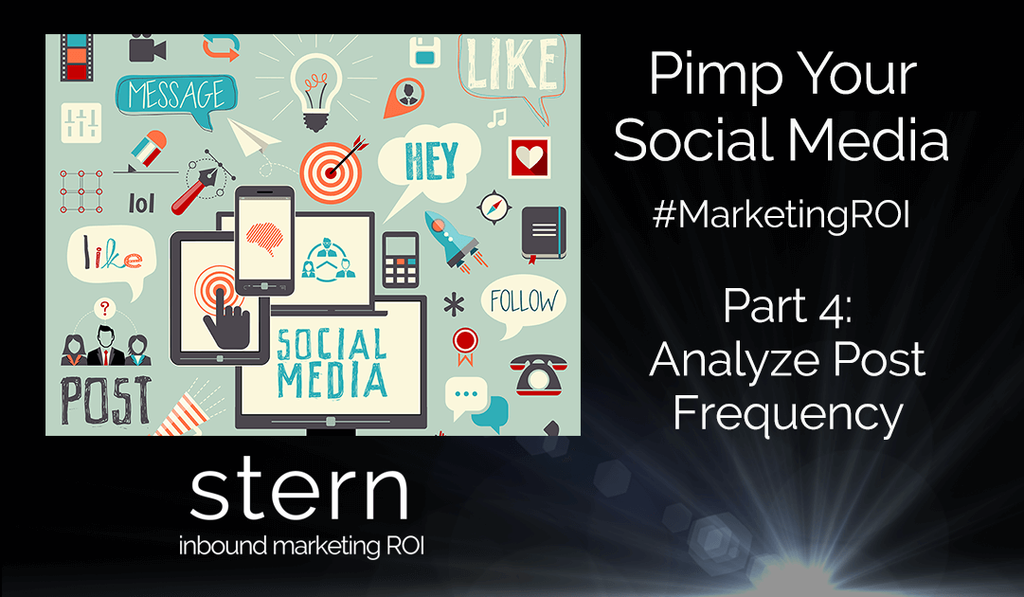Analyze Social Media Post Frequency
Here’s another easy technique for determining the optimal frequency for your social media posts:
Establish a control set by scheduling your messages a reasonable duration apart. Two to two and half hours should be sufficient for Twitter, for instance. You may want to vary your control duration for other networks depending on the speed of consumption (at Stern, we use the term “combustibility”) of their content.
Keep posting according to your control set for a solid week. During this interval, jot down notes on your key metrics as suggested by whichever social media manager you’re using. That’s all you have to do in Phase One.
Phase Two begins the following week. Reduce the duration (“buffer zone” or “buffer time”) between posts. For instance, messages that went out two hours apart should be pared back to an hour and half. Messages that went out two and half hours apart should be pared back to two hours. And so on. Continue to observe and record your metrics.
Phase Three is the comparison phase. Sit down with your metrics and analyze them. Ask yourself how (if at all) the reduction in posting frequency affected your content’s consumption. Did reducing your buffer times help you or hurt you? Make more notes and repeat this process week after week after week.
Though somewhat tedious, this technique is the simplest, most dependable way of getting a bird’s eye view to how subscribers consume your content. Once you have this view, focus on the posting times that maximize your outreach. By doing so, you may find yourself cultivating a whole new audience, or simply optimizing an old one.
Some other things to keep in mind:
You could, theoretically, leverage a social media publishing tool such as Hubspot or Hootsuite Pro to weigh your past posts according to the number of clicks they receive. After which, by reviewing your list, you should have little trouble pinpointing trends. Consider:
You notice that 73% of your most-clicked Facebook posts were shared between 3 p.m. and 4 p.m. each Friday afternoon. Congratulations! You just uncovered some valuable (and enviable) information that could help your business grow.
We hope it goes without saying that you should conduct this kind of rigorous testing on each of the social media streams you leverage.
We also hope it goes without saying that testing is merely a part of your overall social media optimization plan.
The truth is, clicks don’t equal customers. Therefore, to truly analyze the effectiveness of your post timing, you’ll have to drill down deeper, again by using a social media publishing tool, and specifically one that has parity with the database of contacts we assume that you’ve already built. Leveraging a social media publishing tool is the best way to figure out which posts at which times create actual leads and customers rather than merely expanding your general audience.
And of course this goes without saying: if you’re ever inclined to have a pro handle your social media campaigns for you, contact Stern Inbound Marketing right away. Our proven expertise in online media, lead generation, and social media optimization can help your company grow — and we can begin that growth today.
PIMP THE SEO FOR YOUR WORDPRESS SITE WITH
PART FIVE: INTEGRATING YOUR VARIOUS CHANNELS

